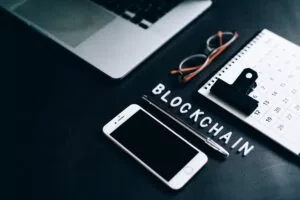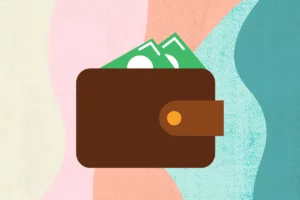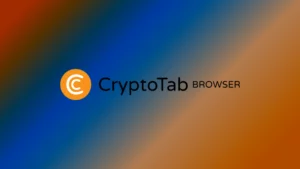
What is Blockchain, and How Does it Work?
There was a time when blockchain was a novel concept. For years the technology was in development. Blockchain finally came into existence in 2009 with the launch of Bitcoin. Since its launch, blockchain has grown considerably. More industries and organization are integrating the technology into their operations. In the upcoming years, we should see blockchain grow to even greater heights.
Understanding blockchains can be difficult as they are very complex. That is why we have created this article to explain what blockchains are, how they work, and what they are used for. We will also answer some commonly asked questions about blockchain.
What is blockchain?
Simply put, blockchain is a distributed database that stores digital information. It is commonly used to record financial transaction, operating as a digital ledger. Blockchains collect data in groups, which are called blocks. These blocks are connected together as one chain.
The goal of a blockchain is to store and distribute digital data without it being altered, deleted, or destroyed. This goal is achieved through blockchain’s decentralized structure. Instead of storing data in one central location, blockchains operate on thousands of computers, also called nodes, which are spread out across a network. Because a blockchain is stored on multiple computers, it is extremely difficult to edit its data. Each computer stores a separate copy of the blockchain database. If one of the databases is lost, the other computers in the network have backup copies of the data. And if one of the nodes is hacked, the other nodes in the chain can identify that tampered copy and cast it out from the blockchain.
There are four different types of blockchains:
- Public blockchains: These are the most common forms of blockchains. Public blockchains can be used by anyone and is owned collectively by its users. There are no third parties controlling or censoring content on the network. All transactions on public blockchains are neutral. This means that there are no good or bad transactions, they are legal as long as they are valid. The Bitcoin blockchain is a popular example of a public blockchain network.
- Private blockchains: In contrast to public blockchains, private blockchain networks are controlled by one group or organization. They regulate who has access to it. Additionally, the governing body is the one that validates transactions and maintains the overall structure of the blockchain.
- Permissioned blockchains: These are private blockchain that can only be accessed through invitation or by permission. This further restricts who is allowed to use the network.
- Consortium blockchains: With consortium blockchains, multiple organizations operate the network. The organizations decide who can enter transactions or access data.
How do blockchains work?
As we mentioned earlier, new data entered into the network is stored in blocks, which are then linked to the chain. To demonstrate how this works, we will use a scenario in which a cryptocurrency transaction is made.
When a new transaction is entered into the network, it is sent to the various computers connected to the network. The computers will then use a consensus mechanism to verify that the transaction is valid. Most blockchains use proof of work as their consensus mechanism. Other blockchains use a mechanism called proof of stake to verify transactions. Once the legitimacy of the transaction is confirmed, a block is created. The block is then added to the chain and the transaction is completed.
To learn more about how blockchains operate, check out this video by 99Bitcoins:
What is blockchain used for?
Blockchain is used for several different industries and applications. As we mentioned earlier, blockchains are mostly used by cryptocurrencies to record and save transactions. But blockchain is used by other industries and companies. Here are some examples:
- Banking and finance: Typically, a bank can take one two three business days to verify and process a transaction. Plus, most banks operate during traditional business hours: Monday to Friday from 9:00 am to 5:00 pm and closed for holidays. This restricts when you can use them. With blockchains, the overall transaction time is greatly increased. You can make transactions around the clock, even on weekends or holidays. Instead of waiting several days for your transaction to process, a blockchain can complete it in 30 minutes or less. At the moment, most banks do not operate on a blockchain. However, this could change as more companies realize the benefits of using them.
- Smart Contracts: Smart contracts are digital contracts stored on a blockchain. These contracts have a set of condition which all parties must agree upon. Once the conditions are met, the terms of the contract are automatically carried out. For example, a customer wants to buy a product from a vendor. The payment and product are exchanged once the terms of the smart contract are met. Smart contracts are popular because they remove the need for a mediator like an attorney. This eliminates fees mediators typically charge. Smart contracts are also popular for their security and reliability
- Supply Chains: Storing supply chain data on a blockchain makes it easier for companies to track and record all the material they have ordered. Plus, companies can use a blockchain to trace the source of a problem, like food contamination. Lastly, blockchains can be used to verify the authenticity of labels like “Fair Trade”, “Organic”, and “Free Range”. An example of a supply chain blockchain is IBM Food Trust. This blockchain traces the journey food products make from harvest to stores.
- Voting: Using blockchains for voting has several benefits. First, it eliminates voter fraud since each ballet entered into the chain can not be tampered with. Second, it removes the risk of human error like miscounts. Third, the votes would be counted more quickly. Lastly, blockchain voting could boost voter turnout by allowing people to vote from their homes. Blockchain voting underwent a trial run with the 2018 midterm elections in West Virginia. Voters cast their ballet through a mobile blockchain platform. While the project was viewed as a success, some government officials questioned the stability of blockchain voting. Still, the benefits of the system cannot be ignored.
- Healthcare: Blockchains would be used in healthcare as a secure storage system for patients’ medical record. Once a person’s medical record is created, it would be written into the blockchain. That record would be unalterable and difficult to access by anyone else. Only the patient and their doctor would would have access to the health records.
The benefits of blockchain
Blockchain has many advantages. As we touched on earlier, most blockchains are decentralized, which makes it hard for someone to tamper with the data. And if a blockchain is hacked, the issue is quickly and efficiently addressed. Public blockchains eliminate the need for third-party verification, which in turn lowers transaction fees. On top of that, transactions are completed in half the time it would take with a centralized system.
Because blockchains use thousands of computers to approve transactions, all human involvement in the process is removed. This leads to less human error which makes for an accurate record of information. If one computer in the network makes a mistake, the other computers would correct it.
Possibly the biggest advantage of blockchain is that anyone in the world can use it. Because of its accessibility, some have argued that blockchain could be used in developing countries for people who do not have access to bank accounts. The blockchain would act as a safe storage of money for these people.
Lastly, blockchains are highly versatile. They can be used for cryptocurrency and bank transactions, monitoring supply chains, and collecting election votes, just to name a few.
Frequently asked questions about blockchain
What are the disadvantages of blockchains?
So far, we have covered the many advantages of blockchains. But there are some disadvantages that you should be aware of.
First, many blockchains require large amounts of electricity to run all the computers in its network. Plus, the proof of work mechanism also expends large amounts of energy. The high energy usage not only creates a large carbon footprint, it also makes it expensive to run the blockchain. To increase efficiency and lower emissions, some blockchains use the proof of stake mechanism, which uses less energy than proof of work.
Second, blockchains can have slow transaction times. Even though a blockchain on average is faster than a bank, there are factors that slow it down. Because blockchains are spread out across a vast network, it can take longer to validate a transaction. For example, the Bitcoin blockchain only process 4.6 transactions per second, while Visa process 1700 per second. Additionally, entering multiple transactions into the blockchain can jam up the network and slow down processing times.
Third, blockchains can be used for illegal activity. Public blockchains allow criminals to operate without interference or surveillance from law enforcement. Illegal goods can be bought and sold without being tracked. The Silk Road is a famous example of illegal trading on blockchains. It was a dark web marketplace where people sold or bought drugs and other illegal items. People used Bitcoins to make purchases from The Silk Road; this made it difficult for governments to track the sales. The Silk Road operated from 2011 until 2013 when it was shut down by the FBI. The issue of illegal activity has led some governments to consider regulating blockchains.
How many blockchains are there?
According to Wikipedia, there were more than 40 million blockchains in use in 2020. That number likely increased in 2022 as more industries switched over to blockchain for their operations.
What is the biggest blockchain company?
At the moment, Coinbase Global Inc. is the largest blockchain company based on revenue ($5.9 billion) net income ($3.0 billion) and market capitalization ($52.4 billion).
Are blockchains secure?
Blockchains are secure due to their decentralized structure. This makes it difficult for criminals to access the blockchain and steal data. If a hacker tampers with a date set in the blockchain, only that copy is altered. It would no longer align with the other copies in the blockchain. Users would then be able to pinpoint the altered copy and remove it from the network.
However, there is still the possibility of a blockchain being hacked. In an article by MIT Technology Review, blockchain hacks have increased in recent years. Since 2017, hackers have stolen roughly $2 billion in cryptocurrency. According to epiqglobal.com, there are three scenarios where hackers can access a blockchain:
1) 51% attacks: These attacks occur when hackers gain control over half the mining process. A common tactic used by hackers is to create a second version of blockchain, which is called a fork. The fork does not reflect transactions from the original blockchain. This allows hackers to create a new transaction and program it as the true version of the blockchain. With the fraudulent blockchain, hackers can double spend cryptocurrency and conduct other harmful acts. Smaller blockchains are most susceptible to 51% attacks as it is easier to gain control over them. Larger and more complex blockchains are harder for criminals to crack. Plus, 51% attacks rarely occur because they take enormous amount of time, money, and energy to successfully pull off.
2) Creation error: Occasionally, security glitches or errors happen when blockchains are created. This more common with large, complex blockchains. Smart contracts are also prone to creation errors. Hackers are known to exploit errors in a smart contract to steal money from users. It is hard to detect the theft because the fraudulent transaction is not reflected in the blockchain. The only way to revert the theft is to make a fork and have all users recognize the new blockchain as the official version.
3) Poor security: Cryptocurrency exchanges are common targets for hackers. If an exchange has poor security for their blockchain, hackers can easily infiltrate the network and steal funds.
Despite these examples, blockchains are still very secure. Blockchain companies and creators are always looking for ways to improve or perfect security technology for blockchains. Hopefully the technology improves to lower instances of hacks.
Can you invest in blockchain?
Unlike cryptocurrency, you cannot invest in blockchain because it is only used to record and process transactions. However, you can invest in blockchain companies like Santander Bank.
What is the future of blockchains?
Blockchain is growing in popularity with businesses, governments, and investors. These three groups are starting to recognize the accuracy, efficiency, security, speed, and money saving qualities of blockchain In the next five years, we should see more organizations adopt blockchain as their storage system.
With that being said, there are still some questions about blockchain’s future. First, the high energy usage of blockchains remains a point of controversy. If blockchains continue to produce high emissions, more organizations will turn to eco-friendly options. Blockchain’s growth will also be affected by government policies. If a government intends to regulate blockchains, then its progress may be restricted or stopped.
Read more

The Best Credit Cards in Canada
Low interest? No fee? Cash back? Find the ideal credit card for your situation.

How to Buy Bitcoin in Canada: Step by Step
Here’s your full guide on everything Bitcoin.

The Best High-Interest Savings Accounts in Canada
Compare the best HISA options in Canada and learn how to apply for one.

CryptoTab Browser Review: Features, Pros and Cons
CryptoTab Browser makes crypto mining easy. Check out this review to learn more.